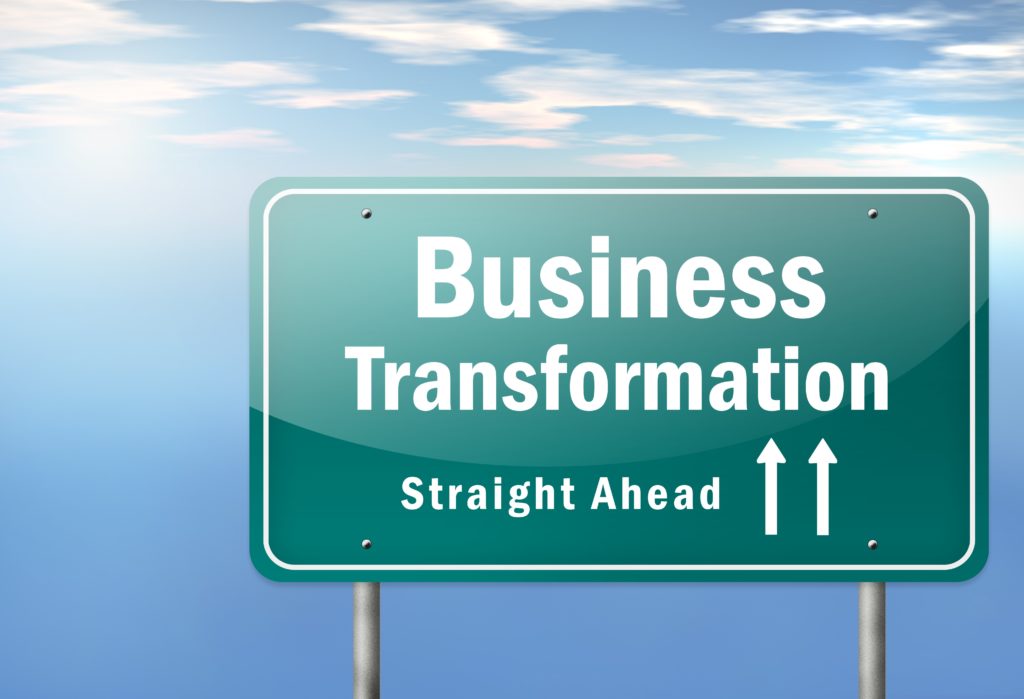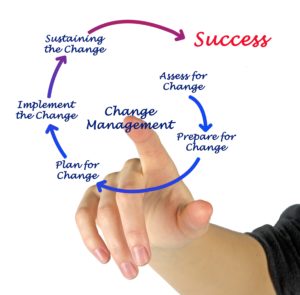
Change Management
Change Management is one thing every company should consider before trying to initiate change. For change to occur in any organization, each individual must think, feel, or do something about the change. There’s no way to predict how employees will react to organizational changes. Whether it be downsizing, moving locations, a change of leadership, merger or acquisitions, or some other transition, managing change in the workplace is an ongoing—and very tricky—task. Being prepared for how to handle employee reactions to workplace changes is key to a successful transition.
Embracing Change in the Workplace
Of course, managing change in the workplace isn’t as simple as implementing some seductively attractive turn-key change management model. You need an effective process, a game plan…. centered around driving change and growth.
Successful managers establish meaningful communication and engagement with their people as a key part of rolling out change initiatives with a team or across an organization. In doing so, these managers understand the barriers that block change and the emotions that are experienced during any change process, such as how people react to change, why people resist change, what motivates people to change and what people need to know in order to embrace change.
But why is all that stuff important?
Because action (change) is always preceded by dissatisfaction; comfortable people have no motivation, urgency or tolerance for change.
So if people, at any level, perceive that the results they are achieving today are ‘good or good enough’ (reality is irrelevant, it’s what people perceive that counts) then they will resist the change, no matter how compelling its benefits may be to some.
The fundamental job of leadership in a time of transition is to deal with the dynamics of change, the flowing together and balance of the forces that change unleashes, so that the company success is sustained. For change to be successful, people must desire to support and participate in the plan for a change.
Simply building awareness does not generate desire. To help you tap into your workforce’s expectations and emotions during the time of change, we’ve compiled a few crucial points you may want to consider.
Alert Employees of the Changes
Studies have shown that people are more welcoming of change if they’re told about it at the beginning of the process. Be honest and direct when informing employees about the change; being open and transparent about how and why a change is taking place will lessen the distress employees are experiencing and put everyone on the same page, with the same vision. After communicating the message, be prepared—and willing—to listen to any and all feedback concerning the changes.
Once information about the change has been shared, be ready for employees’ reactions by familiarizing yourself with the emotional phases of change.
Define Your Strategy
It is critical to manage change by creating and implementing a strategy that defines an approach consistent with the unique needs of the organization. The strategy serves as the guiding framework, providing direction and shaping decision making throughout the change process. A simple way to gather data for the strategy is to set up interviews and ask questions regarding the different aspects of the change. Below are some typical questions:
The Situation
What is being changed?
How much perceived need for the change exists?
What groups will be impacted?
How long will the change take?
People and Their Roles
Who will serve as a high-level support?
What functional groups should be represented to lead the effort?
Issues for Analysis
What will happen if we do/don’t do this?
How universal is the change?
Are there exceptions or deviations to consider?
From the answers to the questions, your strategy document can be created, serving as a “blueprint” for the initiative. A strategy document should discuss important components of the change, including: description of the proposed change vision, and its goals; the reasons(s) why the change is necessary; critical success measures and key performance indicators; project stakeholders and stakeholder groups and their involvement; key messages to communicate; roles and responsibilities; target time frame to achieve goals, and focus areas.
Understand the Emotional Phases of Change
In any transition a company is experiencing employees often feel a sense of loss. Loss of what used to be, loss of culture, leadership, loss of routine, predictability, comfort zone. Using Dr. Elisabeth Kübler-Ross’ “5 stages of grief” as a model, the following are some of the most common emotions employees may feel when faced with organizational change:
Denial & Immobilization
Mental paralysis following initial news of a change. Thoughts that include “They won’t do it,” “They don’t have the nerve,” or “They’re just trying to scare us.” Break down the change into a series of steps to help employees understand what’s happening and why. If possible, delegate tasks to employees that will help make the transition period smooth. This will both ease your workload as a manager as well as give employees a sense of involvement and responsibility/control. Interview employees about their feelings. It’s important to understand what employees are thinking and feeling in order to know what issues might need to eventually be addressed.
Negotiation

During this phase prescribed roles are rejected and attempts to negotiate ensue. IF you have made the best decision for the company regarding the change, you will have to remind them, gently, that the change is a positive thing and that their role can’t be negotiated as it is part of the plan toward future success. Speak to the people who make negative comments, and remind them that they’re important to the team and that their team needs their best work and efforts. Ask them what you can do to help them.
Anger
Reality sinks in and negative emotions take over. Employees can become distracted and less committed to the organization. They’ll spend time venting and, perhaps, sabotaging the company by not sharing information, being less collaborative, and treating customers badly. Management should hold “vent meetings” and one-on-one meetings where employees can talk about their concerns, fears, and thoughts about the transition. By getting employees’ opinions and reactions, you’ll show them you care and that you’re accessible to them. Keep them updated, clear up rumors, and remember it’s impossible to over-communicate.
Depression
Failed last-ditch negotiation efforts and angry outbursts lead to a depressed state. Be aware of agitation, excessive crying, irritability, or social isolation. Encourage employees to talk things through with colleagues, managers, HR, and stress counselors. Make an effort to keep morale high. Showing your employees you appreciate them and their cooperation during the change goes a long way.
Acceptance
Praise the steps being taken to embrace the change until the employee is confident enough to give the change a chance. Be sure to lead by example and keep a positive attitude. This will be a major factor in determining the attitudes of employees and the workplace atmosphere. Your attitude is the one thing that you can control and by being upbeat, positive, and enthusiastic, you’ll be able to foster motivation in others.
Implementing change in phases
For companies planning a major change initiative, taking a phased approach can help ensure that the transition to a new system or process is as smooth and seamless as possible. Research recommends three phases:
- Prepare for change – By taking steps such as defining your change management strategy, developing your change management team, and outlining key roles.
- Manage the change – By creating and executing change management plans that include communications, operations and resistance management.
- Reinforce the change – By collecting and analyzing feedback and then implementing corrective actions where needed.
Anchor the Changes in Corporate Culture

To make any change stick, it should become part of the core of your organization. Your corporate culture often determines what gets done, so the values behind your vision must show in day-to-day work. Make continuous efforts to ensure that the change is seen in every aspect of your organization. This will help give that change a solid place in your organization’s culture.
It’s also important that your company’s leaders continue to support the change. If you lose the support of these people, you might end up back where you started. So talk about progress every chance you get. Tell success stories about the change process, and repeat other stories that you hear. Include the change ideals and values when hiring and training new staff. And finally, publicly recognize key members of your original change coalition, and make sure the rest of the staff – new and old – remembers their contributions.